 |
 |
 |
| |
A Prospective Comparison of Arterial Stiffness and Inflammation in Adults with HIV/Hepatitis C Co-Infection, HIV Infection and Healthy Controls..... "markers of inflammation and monocyte activation were significantly higher among HIV/HCV participants suggesting a possible mechanism for the increased risk of CVD reported in this patient group."
|
| |
| |
Reported by Jules Levin
IDSA 2015 Oct 7-11 San Diego, CA
Sonika Malik, MD1, Melissa Osborn, MD2,3, Brian Ferrari, AS4, Amy Graham, MS4, Sanjay Gandhi, MD3,5, Grace a Mccomsey, MD, FIDSA4,6 and Corrilynn O Hileman, MD, MS3,7, (1)Heart and Vascular, Metrohealth Medical Center, Cleveland, OH, (2)Medicine, MetroHealth Medical Center, Cleveland, OH, (3)Medicine, Case Western Reserve University School of Medicine, Cleveland, OH, (4)Case Western Reserve University, Cleveland, OH, (5)Heart and Vascular, MetroHealth Medical Center, Cleveland, OH, (6)University Hospitals Case Medical Center, Cleveland, OH, (7)MetroHealth Medical Center, Cleveland, OH
PROGRAM ABSTRACT
Background: HIV leads to accelerated atherosclerosis and HCV co-infection further increases the risk of cardiovascular disease (CVD) events. Although HCV improves lipoprotein levels, the effect of increased systemic/vascular inflammation and higher prevalence of insulin resistance may heighten CVD risk in this population. This is presently unknown.
Methods: This is a prospective, matched cross-sectional study to compare arterial stiffness measured by aortic pulse wave velocity (PWV), soluble markers of inflammation and monocyte activation, fasting glucose and lipoprotein levels between adults with HIV/HCV co-infection, HIV only and healthy controls. Adults with HIV-1 RNA <400 copies/ml on stable antiretroviral therapy (ART) (HIV groups) without CVD or diabetes (all groups) were included. Matching criteria were age, sex and CD4+ count (HIV only). ANOVA was used to compare mean PWV, biomarkers, glucose and lipoprotein levels.
Results: 25 HIV/HCV, 23 HIV and 23 controls were included. Demographics were similar except there were more African Americans (48% in HIV/HCV, 57% in HIV, 17% in controls; p<0.01) and smokers (64% in HIV/HCV, 45% in HIV, 22% in controls; p=0.02) in the HIV groups; history of alcohol abuse was more common (40% vs 13% in HIV and 4% in controls; p<0.01); and hypertension (HTN) was less common (4% vs 36% in HIV and 26% in controls; p=0.02) in HIV/HCV. Overall, 70% were men. Median age was 53 years and BMI 26 kg/m2. In the HIV groups, median HIV duration was 13 years; current and nadir CD4+ counts were 441 and 192 cells/mm3; 21% were on protease inhibitors and 92% had HIV-1 RNA <48 cps/ml. PWVs were similar between groups [8.18 m/s for HIV/HCV, 7.81 m/s for HIV; p=0.4 for HIV/HCV vs HIV, and 7.95 m/s for controls; p=0.53 for HIV/HCV vs controls]. Results were similar adjusting for age, race, BMI, smoking, alcohol use and HTN. The figure shows the biomarker analyses. LDL was lower in HIV/HCV compared to the other groups, but oxidized LDL was similar. There was no difference in glucose between groups.
Conclusion: While arterial stiffness was similar between groups, markers of inflammation and monocyte activation were significantly higher among HIV/HCV participants suggesting a possible mechanism for the increased risk of CVD reported in this patient group.
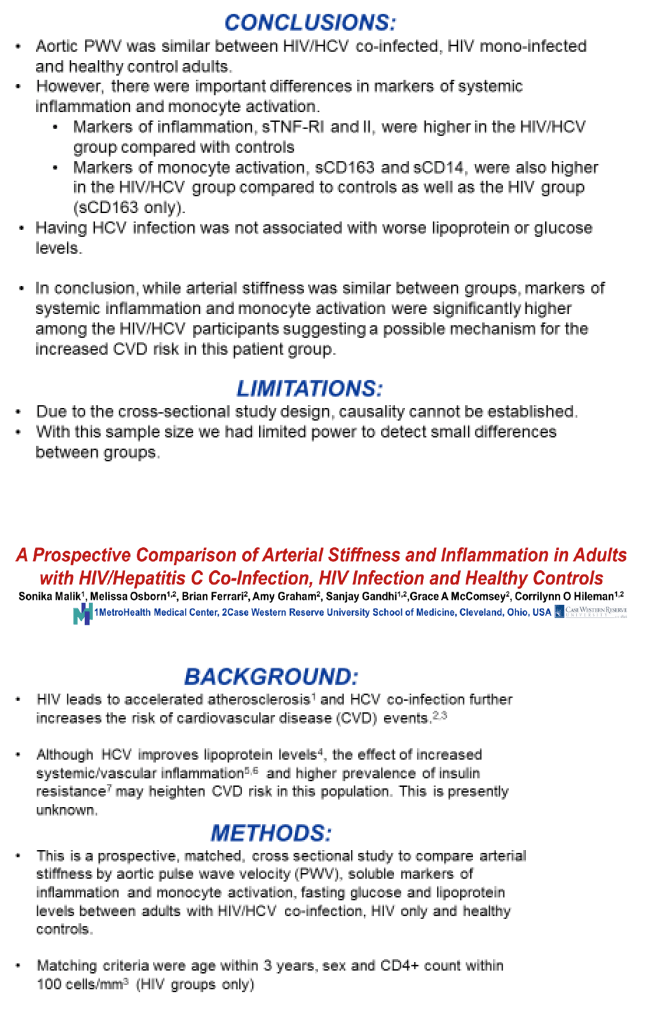
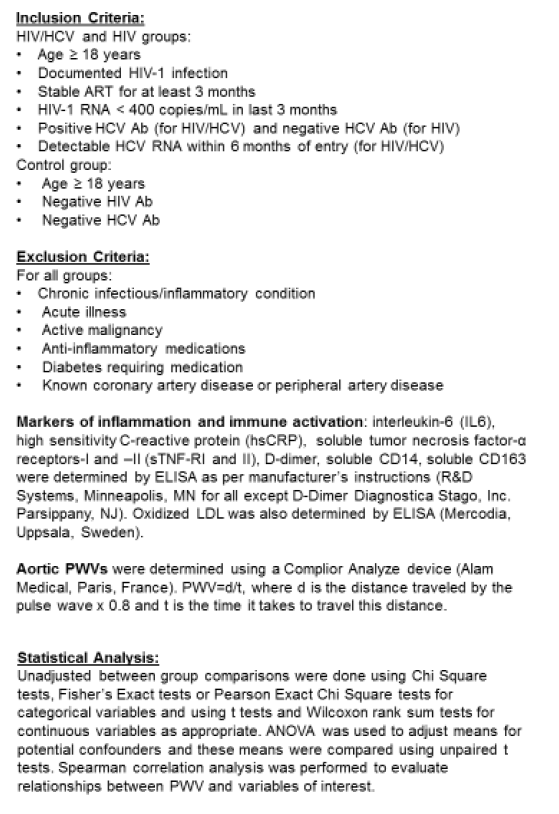
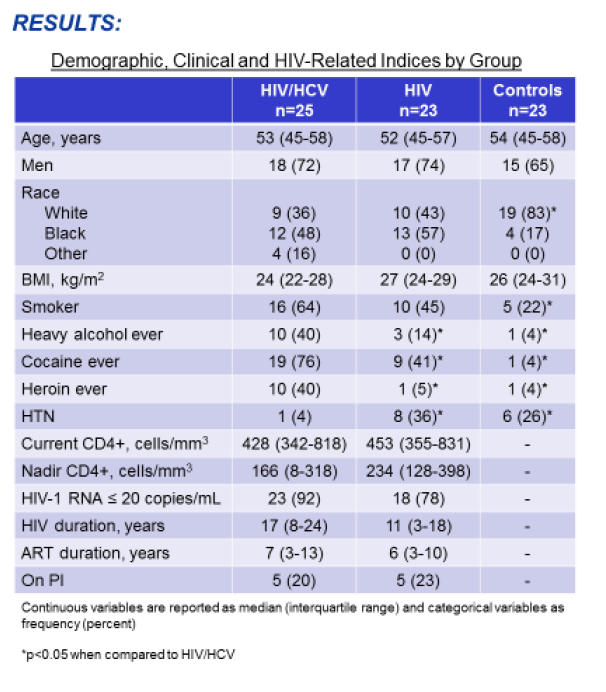
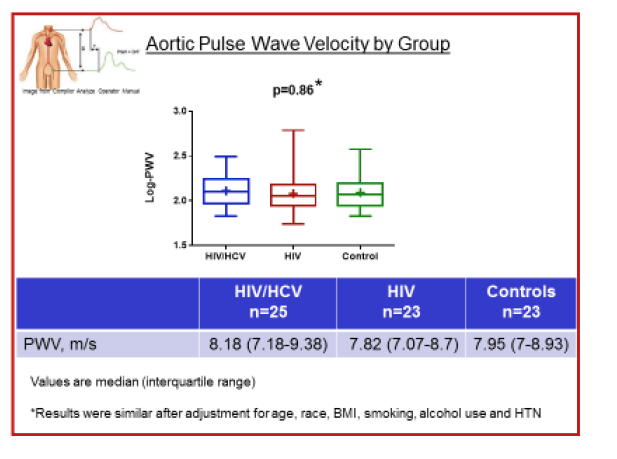
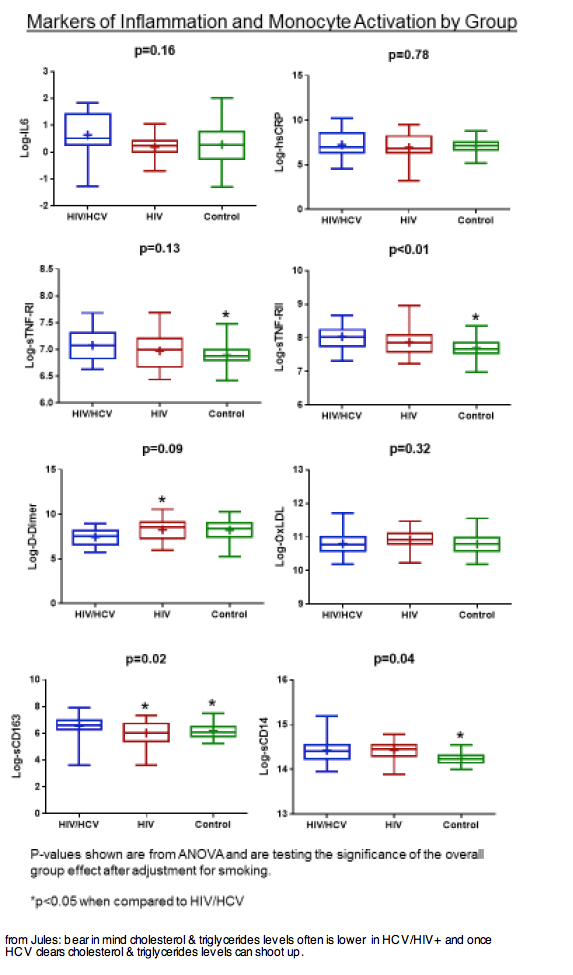
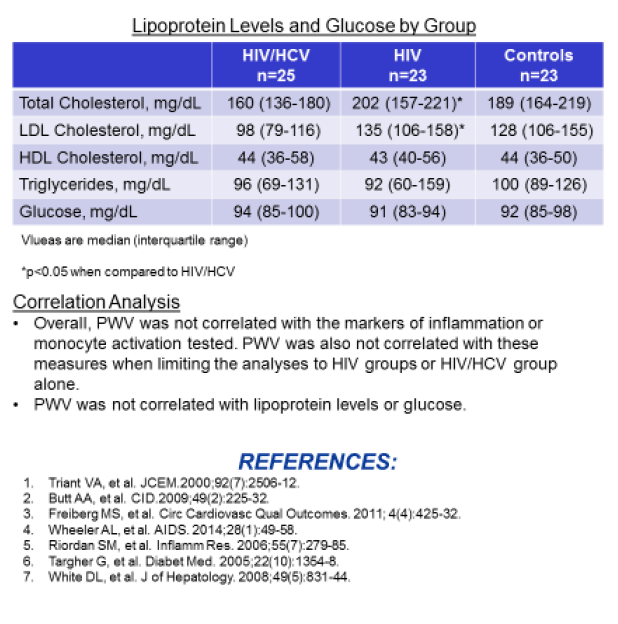
|
| |
|
 |
 |
|
|